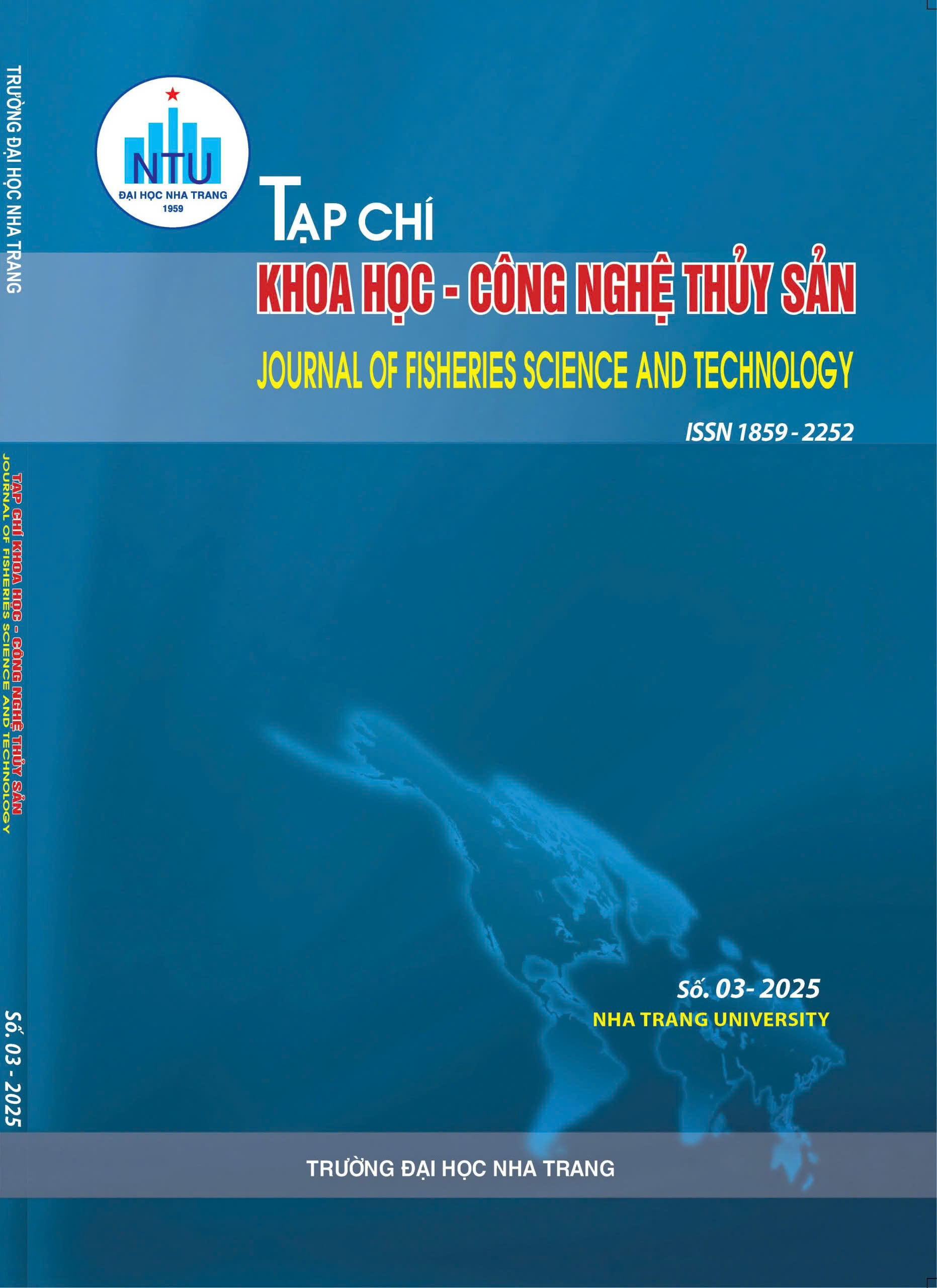##plugins.themes.huaf_theme.article.main##
Abstract
This study investigates the effect of temporal (year, month) and environmental conditions (lunar phase, sea surface temperature) on the catch per unit effort (CPUE) of squid (Loligo sp.) catched by stick-held falling net fisheries in the Gulf of Tonkin. Data were collected from vessel NA91678TS during the period 2018–2023, including fishing time, catch, species and environmental parameters (sea surface temperature) at the fishing areas. A Generalized Additive Model (GAM) was employed to characterize the nonlinear relationships between CPUE and the predictor variables. The results revealed that Moon phase exerted the strongest effect on CPUE, followed by year and month, indicating significant temporal and seasonal patterns in squid catchability. Sea surface temperature did not show statistically significant influence, although a potential nonlinear trend was observed. The s stick-held falling net caught the highest yield in September, October and during periods near the new Moon, reflecting the seasonal nature of the fishery and the strong positive phototactic behavior of squid. The study contributes to the understanding of critical factors affecting the catch rates of valuable species, which helps to determine the optimal fishing process of the stick-held falling net fisheries and facilitate sustainable development in fisheries production and management.
Keywords: CPUE, Moon phase, sea surface temperature, squid (Loligo sp.), the stick-held falling net fishery.

